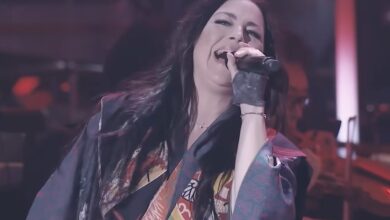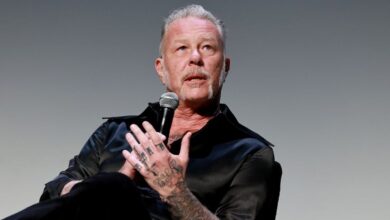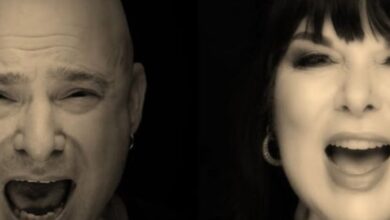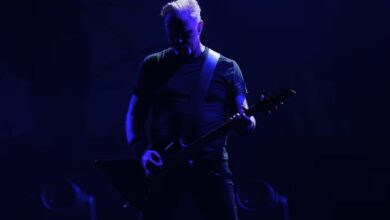When Metal and Pop Collided: The Unforgettable Grammy Performance of Metallica and Lady Gaga
There are performances that are exciting, some that are unforgettable, and a few that become etched into music history. The 59th Annual Grammy Awards gave us one of those rare moments. In 2017, Los Angeles’ Staples Center turned into a battleground of genres as Metallica’s James Hetfield and global pop icon Lady Gaga took the stage together for a performance of “Moth Into Flame.” No one expected what followed: pure, electrified chaos and brilliance that shook the very walls.
The pairing of Metallica—a band synonymous with thrashing riffs, growling vocals, and metalhead devotion—with Lady Gaga, known for her theatrical pop presence, may have raised eyebrows before the show. But what unfolded onstage wasn’t a clash—it was chemistry. It was proof that when two distinct sounds meet with mutual respect and unbridled energy, magic can happen.
As the first notes of “Moth Into Flame” exploded into the crowd, Gaga strutted across the stage in leather and studs, mirroring the band’s gritty aesthetic while retaining her signature flair. Hetfield stood ready, guitar in hand, his presence as commanding as ever. The crowd, a blend of genres and generations, rose to their feet, sensing something massive was underway.
Then the unexpected happened—Hetfield’s microphone failed. Millions watching live couldn’t hear his voice during the opening lines. But rather than falter, the moment pushed both performers into overdrive. Gaga, ever the professional, stepped closer, sharing her mic with Hetfield without missing a beat. It was instinctual, effortless, and iconic.
Despite the technical glitch, the pair powered through with unstoppable momentum. Gaga, her voice soaring through five octaves, belted with the kind of rawness that met metal on its own turf. Her pop polish gave way to grit and growl, proving she wasn’t just there to blend in—she was there to rise to the challenge.
Hetfield, visibly frustrated at first, quickly channeled his energy into the performance. He shredded his guitar and stalked the stage with youthful rage, his voice regaining thunder with every line. The crowd was no longer concerned with what went wrong—they were mesmerized by what was going right: two artists, worlds apart, fused together in the fire of live music.
The staging itself was pure adrenaline—pyrotechnics, strobes, and a band that never played anything safe. Lars Ulrich’s drums pounded with primal intensity. Kirk Hammett’s solo wailed like a banshee. And Gaga, dancing in perfect rhythm with the band, looked every bit the rock goddess.
Critics later hailed the performance not just for its guts, but for its symbolism. It broke down genre walls. Metalheads embraced Gaga. Pop fans discovered the intensity of Metallica. For a fleeting few minutes, the two camps united, screaming in unison to a song that was never meant to be a crossover hit—but became one through sheer willpower and performance.
Backstage, both Hetfield and Gaga expressed frustration over the mic mishap, but neither allowed it to taint the moment. In fact, the glitch made the performance even more legendary—proof that true professionals adapt and rise under pressure. It turned a possible disaster into a defining highlight of the evening.
Social media lit up instantly. Fans posted side-by-side photos of Gaga and Hetfield, praising their chemistry. Memes and gifs circulated for weeks, and the performance video went viral overnight. Some even called for a full collaborative album between the two—a dream pairing no one knew they needed.
Gaga later shared in interviews that performing with Metallica was “one of the most exhilarating things” she had ever done onstage. Her respect for the band’s legacy was evident, but she brought no less than her full self to the performance. It was a reminder that pop doesn’t mean soft—and metal doesn’t mean closed off.
As for Metallica, the collaboration opened up a new chapter. They were no strangers to experimentation, but the moment with Gaga allowed them to tap into an entirely new demographic. Suddenly, younger fans who had never heard “Master of Puppets” were diving headfirst into Metallica’s back catalog.
Years later, the performance remains one of the most talked-about moments in Grammy history. Not just for the sound, the pyrotechnics, or the outfits—but for the spirit. It was defiant, passionate, and above all, real. The kind of moment that reminds us why live music matters—because anything can happen.
And in the grand chaos of that Grammy night, one truth rang clear: when talent, fire, and fearlessness converge, genre doesn’t matter. All that matters is the music.





